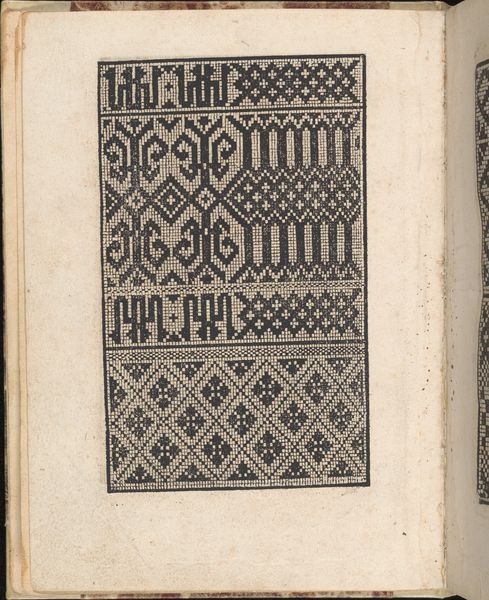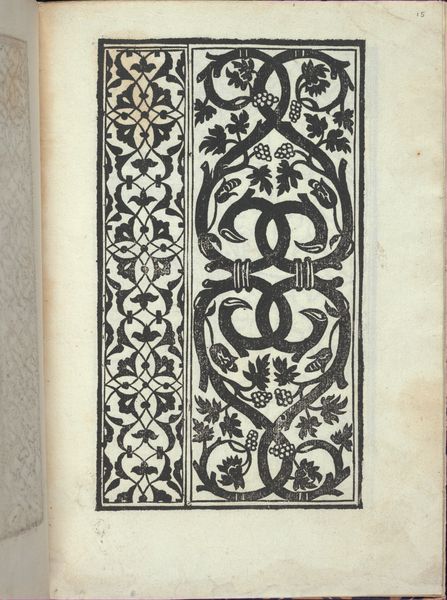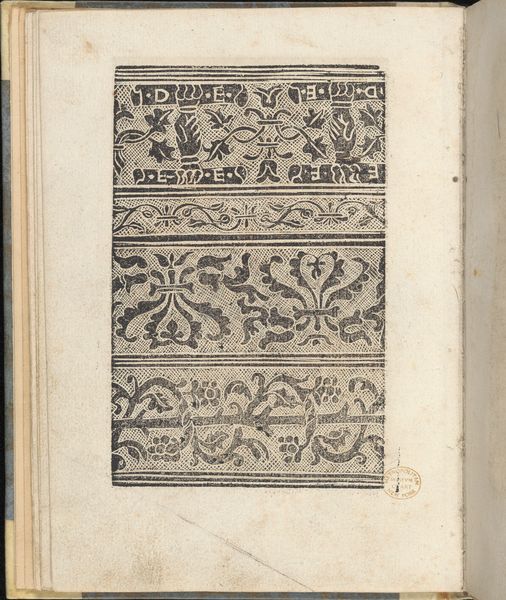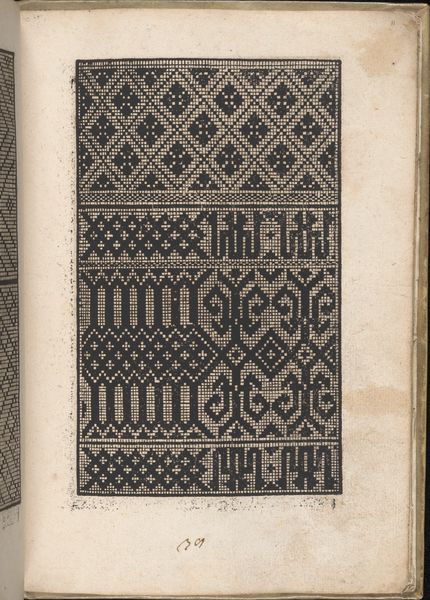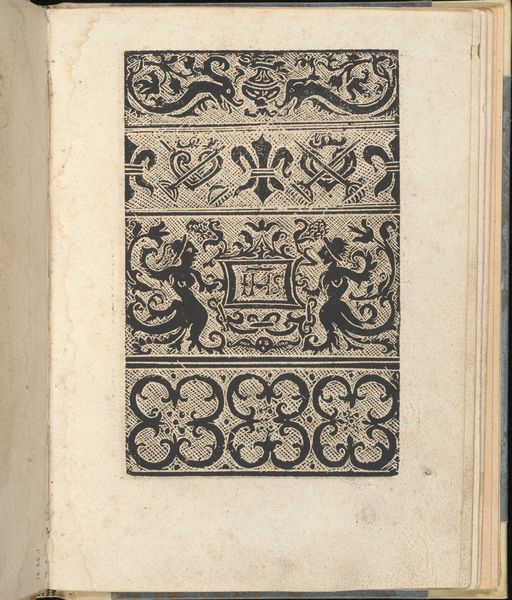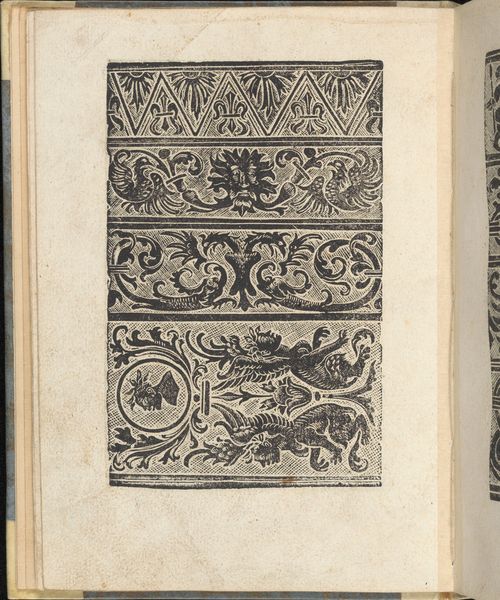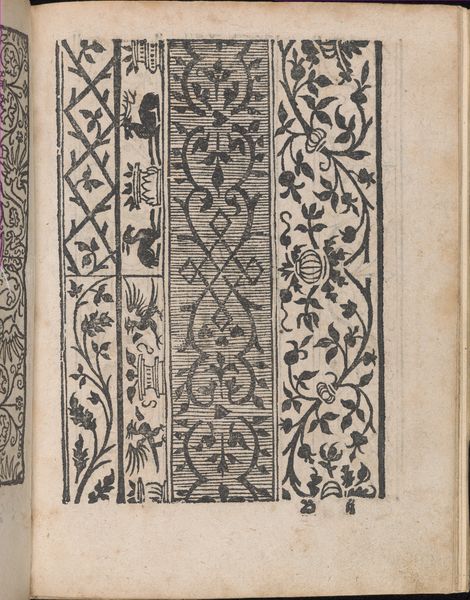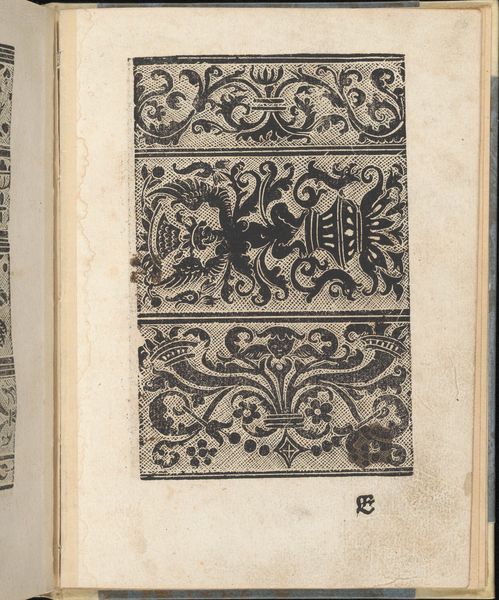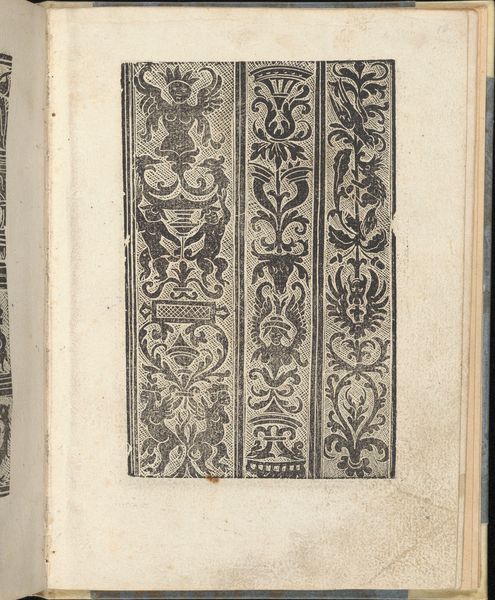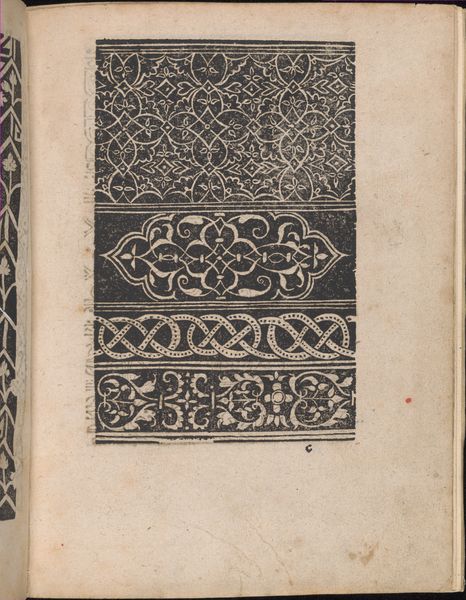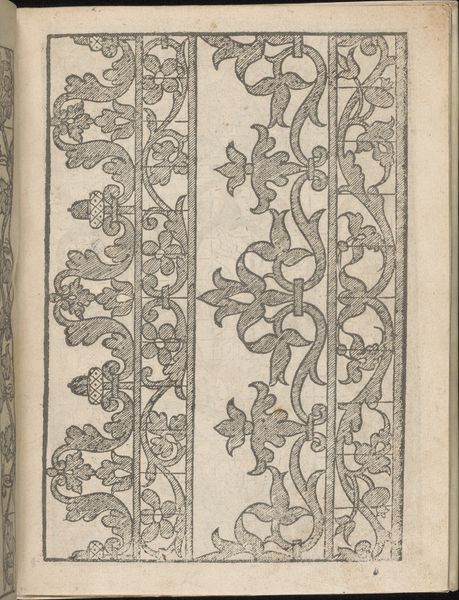
Ein new getruckt model Büchli...Page 15, verso 1529
0:00
0:00
drawing, graphic-art, print, textile, typography, woodcut
#
drawing
#
graphic-art
#
medieval
# print
#
book
#
textile
#
typography
#
geometric
#
woodcut
#
northern-renaissance
Dimensions: Overall: 7 7/8 x 6 1/8 in. (20 x 15.5 cm)
Copyright: Public Domain
Curator: At first glance, I find this page visually fascinating with its structured grid. There's a graphic simplicity that is surprisingly captivating. Editor: We're looking at a page from "Ein new getruckt model Büchli," dating back to 1529. It’s a woodcut, by Johann Schönsperger the Younger, part of the Metropolitan Museum of Art's collection. Curator: The grid is certainly deliberate. It feels like the dawn of modular design, but infused with organic, flowing motifs. Editor: Precisely. It was meant to guide embroidery and textile work. These weren't designs meant for passive viewing; they were actively replicated in the domestic sphere, shaping cultural aesthetics through textiles. These books played a significant role in the history of craft. Curator: The symbolic dimension is evident in the chosen elements. Flowers often represent fertility and growth, while geometric forms stand for order. The placement of these patterns reveals the psychological desire to introduce harmony within the domestic setting. Editor: Absolutely. These pattern books fostered artistic innovation beyond the elite. The act of replicating these designs, within the societal contexts of 16th century, transformed everyday individuals into active participants in art history. Curator: I am thinking about what these books meant for women, allowing them to become creators themselves. This pattern book provided accessibility and fostered artistic expression for a wide populace. Editor: Exactly! The visual power here, beyond the beautiful floral patterns or letterforms, resides in how art was disseminated and democratized. The northern renaissance period saw this push outside the domain of only nobility. Curator: Looking closely, I see not only simple designs but echoes of broader philosophical movements playing out in textiles and stitched forms. A beautiful expression! Editor: It speaks to how art functioned as an accessible force then. A real democratization of art.
Comments
No comments
Be the first to comment and join the conversation on the ultimate creative platform.

